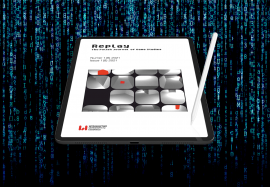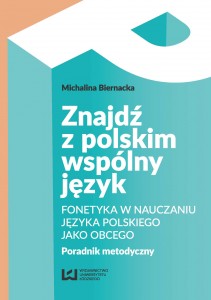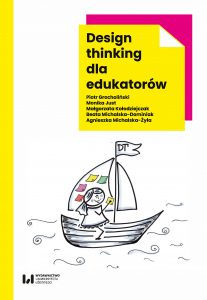Replay. The Polish Journal of Game Studies | Tom 8 Nr 1
Opublikowano: 3 February 2023

Replay. The Polish Journal of Game Studies to pismo poświęcone interdyscyplinarnym studiom nad grami i odbiorcami gier, publikujące wyniki badań prowadzone z różnych perspektyw, między innymi kulturowej, socjologicznej i filozoficznej, ze szczególnym naciskiem na historię gier cyfrowych.
Zagadnienia podejmowane w periodyku dotyczą rozwoju i przeobrażeń medium gier wideo, zjawisk oraz praktyk towarzyszących uczestnictwu w rozgrywce, procesów zachodzących podczas interakcji pomiędzy grą i graczem, metodologii badań nad grami cyfrowymi, studiów przypadków ukazujących specyfikę rozwiązań mechanicznych i stylistycznych, a także znaczenia gier dla dzisiejszej kultury. Wśród poruszanych przez opublikowane artykuły problemów znajdują się między innymi: kwestia narracyjności gier, refleksja nad funkcjonowaniem wirtualnej przestrzeni, znaczenie interfejsu użytkownika, transmedialność gatunków, recepcja estetyki gier oraz ich artystycznego wymiaru.
Celem czasopisma jest stworzenie wspólnego, uniwersalnego języka dla badaczy gier cyfrowych, z którego mogliby korzystać wszyscy niezależnie od reprezentowanej dyscypliny. W związku z tym duży nacisk kładziony jest również na przyjmowanie prac dotyczących typologii gier cyfrowych i odpowiadającej im terminologii. Ponadto czasopismo dąży do rozwijania i popularyzowania wiedzy o grach, zarówno w kontekście teoretycznym (interdyscyplinarnym i specjalistycznym), jak i praktycznym (nowatorskie rozwiązania), a także bycia swoistym forum do wygłaszania opinii na temat gier oraz prezentowania i rozpowszechniania wyników badań empirycznych z tego zakresu, głównie osadzonych w kontekście gier cyfrowych.
W numerze:
The art presence of videogames
Aleksandra Prokopek
16-bit dissensus: post-retro aesthetics, hauntology, and the emergency in video games
Patrick R. Dolan
Santiago Zabala reveals a crisis in modern society that perceives a world dominated by oppressive neoliberal ideology as acceptable and unproblematic. He claims that today’s greatest emergency is that we fail to notice other emergencies in society. To break out of this state, we need an aesthetic force to shock individuals into a new awareness. Unfortunately, while many social and global issues have recently come to widespread attention, the emergency still prevails in many forms of media. For example, the emergency in AAA video games appears in their continual push for higher resolution graphics, hyper-detail, verisimilitude, and intricate gameplay, perpetuating a hegemonic ideology. Exploitative labor practices, lack of representation beyond hetero-sexual, cis-gendered and neurotypical, and capitalist ideals are perpetuated in popular games in service of a hyper-real, high-fidelity aesthetic. One force that combats this emergency is pixel graphics and simplified gameplay, or post-retro aesthetics. While tied to the past, these aesthetics are not nostalgic but transgressively hauntological. To explore this claim, I discuss Dys4ia and Undertale as key post-retro games and reach beyond commercial indie gaming to point to hauntological work being done through DIY game making platformers such as Bitsy.
Play the art: Artistic value in video games
Klaudia Jancsovics
Playing a game does not mean that we are doing something childish and useless. Using a new technology to express our feelings and raise the awareness of social issues does not mean we cannot call it art. If we go back in time, we can realize that there has always been a resistance to novelty and machines. Sometimes, they were even considered harmful. The same life cycle happens with video games: they are valuable in many ways, they are far more developed than they were twenty years ago, and they have even reached a stage where we can find art in them. But how can they be art? Is the answer in the story or in the audiovisual elements?
A tale of two Eberts: Videogames and the arbitrariness of meaning
Paweł Kaczmarski
The article revisits and examines in detail the so-called Ebert debate: an exchange of polemic voices between Roger Ebert, his opponents and supporters, on the issue of the relationship – both actual and potential – between games and works of art. Initiated by Ebert’s famous remarks that games can never be art, the debate offers a variety of views on the nature of art, the role of experience in art and games, the possibility of artistic expression in games, and the autonomy of art. The main point of the article is not so much to compare these views as to explain the contradiction at the heart of Ebert’s own argument: the critic seems to be constantly torn between the idea that games cannot be art in principle and the more practical view that it is impossible to know for certain that no games will ever become art. This contradiction seems to stem directly from Ebert’s inconsistent views as to the source of meaning in games, and it allows us to shed new light both on the nature of games as a medium, and on fundamental issues with contemporary games studies/criticism.
Playing distressed art: Adorno’s aesthetic theory in game design
Benjamin Hanussek
The discussion on games as (not) art has been raging for decades without reaching a consensus. It is argued here that the ontological status of games is irrelevant for the perception and development of aesthetic experiences in videogames. Instead, game design should be regarded as ripe to convey the experience of art according to established aesthetic theories. The essay presents Adorno’s aesthetic theory and highlights its reflections in the games Papers, Please and Observer. It then describes how they were synthesized into a critical gameplay experience in the author’s game Distressed. The latter may be regarded as an example of a method in game studies in which the aesthetic potential of games is explored by creation rather than analysis. Arguably, this reveals the importance of epistemological approaches towards games and art instead of the predominant ontological ones.
The aesthetics of speedrunning: Performances in neo-baroque space
Emilie Reed
Speedrunning describes activities related to the development and performance of strategies to complete games quickly, and is a valuable source of historical and technical information, while producing specialized aesthetic explorations of a videogame’s environment. Most research on speedrunning emphasizes its metagaming or documentary function. However, speedrunning also changes the aesthetic experience of gameplay, both for players and in spectated performance. Aesthetic investigation informed by art historical perspectives, such as Angela Ndalianis’ theory of the Neo-Baroque and H.S. Becker’s study of Art World formations, offers new insights into the experience of speedrunning and how discontinuous and disjointed simulated space is experienced and appreciated as aesthetic phenomena by players and spectators. While Nidalianis has applied her theory to videogames, among other types of contemporary entertainment, further investigating speedrunning performances through this lens extends her analysis and problematizes the idea of a videogame as a singular aesthetic work, instead drawing attention to alternative aesthetic experiences videogames can offer.
Filip Fabian Jankowski
Niniejszy artykuł proponuje wprowadzenie nowej kategorii opisującej część gier cyfrowych – „gropowiastek” – na podobieństwo literackich powiastek filozoficznych. Za punkt wyjścia autor przyjmuje zaproponowane przez Tomasza Z. Majkowskiego określenie „gropowieści”, odnoszące się przeważnie do gier bogatych znaczeniowo i pozostawiających graczowi spory margines swobody. W przeciwieństwie do gropowieści, w gropowiastkach z góry ustalona jest kolejność zarówno pokonywania wyzwań, jak i toku opowiadania; wizja świata – zgodna z założoną przez twórców tezą. W pojęciu gropowiastek można zawrzeć przykładowo gry przygodowe, autobiograficzne, dziennikarskie i „symulatory chodzenia”. Tak więc proponowane pojęcie pozwoliłoby zakwestionować sztywny podział oprogramowania ludycznego na „gry” i „nie-gry” oraz łatwiej włączyć je w dyskurs artystyczny.
Feeling the narrative control(ler): Casual art games as trauma therapy
Hailey J. Austin, Lydia R. Cooper
Through a combination of aesthetics and game mechanics, casual art games offer unique engagements with trauma, allowing players to practice grief or empathise with the traumatic experiences of others. Both “Spiritfarer” (Thunder Lotus Games 2020) and „Mutazione” (Die Gute Fabrik 2019) utilise similar aesthetics (2D art, pastel colours and calming music) alongside agency-driven gameplay mechanics (choosing when to let spirits go or how to react to a character’s trauma) that create a safe space. This is possible because neither game is competitive, nor does it allow the player to lose. Instead, agency is given to the player through narrative choice and exploration of the beautiful storyworld. We argue that games like “Spiritfarer” and “Mutazione” can be used as models for the further development of casual art games that can be used as art therapy through their emotional connections embedded in both the aesthetics and gameplay.
Komentarze
Ten post dostępny jest także w języku: Polish





